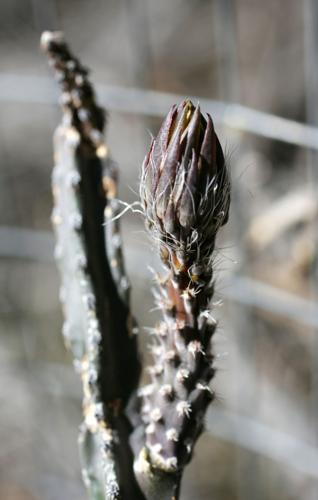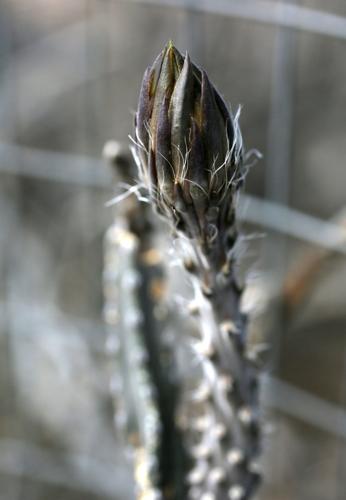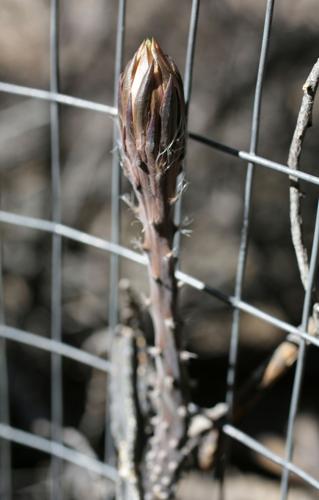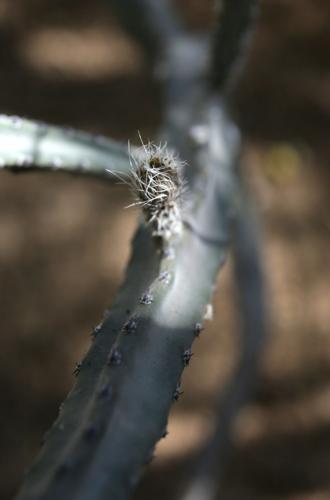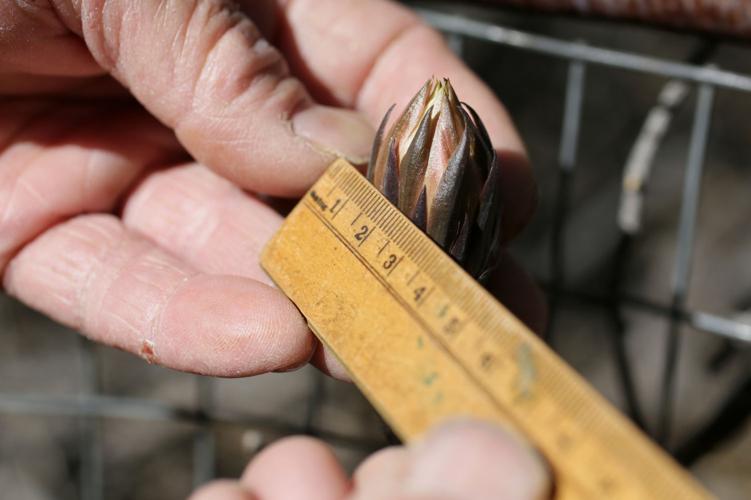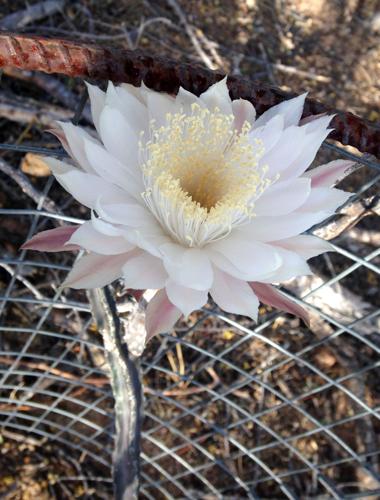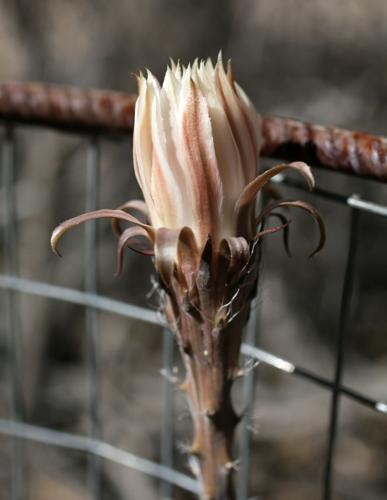Every year at just about mid-April, Lee Mason becomes a stalker.
Mason, the general services director at Tohono Chul Park, is stalking for signs of when Peniocereus greggii–the Queen of the Night cereus cactus–will reveal its hand-sized, creamy white and pale yellow blooms.
Mason is the guy who calls the popular Bloom Night, the evening event when Tohono Chul Park is open to show off flowers from its 385 queens. The park says it is the largest collection in the world.
Bloom Night is one of the most spontaneous events on the Tucson calendar, but it’s several weeks in the making.
Early April: Nothing yet.
Mason doesn’t see any signs of blooming, even though saguaros are flowering on the early side of their flowering season. The park’s wild and tended cacti, which are native to the Sonoran Desert, still remain hidden among brush and under trees, looking like inch-wide dried sticks that characterize the plant most of the year.
The regular bloom season, which can last as long as two weeks, is May through July.
April 15: Fuzzy spots appear at the areola, the organ where the spines grow.
That’s the sign of stem growth, but not which kind, says Mason.
“That can either be a flower or it can turn into an arm,” he explains. If it starts to turn pink, it’s a flower; gray, it’s an arm.
Mason now starts checking every week to see if the fuzz balls turn into buds. “They’re pretty much on track,” he says.
April 20: One plant has a bud.
April 28: The bud stalls.
Mason has been watching queens at the park since 2002, 10 years after the first Bloom Night event was called. Every year the cactus acts the same way, which is unpredictably.
This is one of those times. When the stem with the emerging bud gets to be about 50 millimeters (2 inches) long, it sometimes, but not always, goes into a stalled status.
“They just sit there, from one day to several weeks,” he says.
“There’s something at some point that triggers them to start growing.”
No one knows what that trigger is. Mason has paid attention to humidity, temperature, rain and length of daylight, but he hasn’t seen a pattern.
He’s observed that some stems will stall, as if waiting for other plants to catch up for a mass flowering.
May 5: The bud breaks stall.
The bud stem has started growing again, says Mason, making it the earliest blossom this year. It’s grown to 80 millimeters.
May 11: Mason calls this flower ready to bloom.
The stem has grown to 152 millimeters. By noon the petals start to loosen. Sometimes a flower will close back up, but this one is ready for its show.
At 6 p.m., the petals begin opening. By 9 p.m. it unfurls to its full 25-centimeter (about 10 inches) width, the white petals drooping to reveal yellow-tinted stamens.
If this flower bloomed with a bunch of others, then it could be pollinated by the hawk moth, which collects the sticky pollen while trying to reach the nectar deep inside the blossom.
Flowers on the same plant cannot pollinate each other, so the plant needs the moth to bring pollen from another plant.
May 12: Flower withers in the sunlight.
After one night of bloom, the flower will take about a week to fall off. If the moth pollinated the plant, a fruit will grow and ripen to red.
May 16: Flower stem falls off.
As Mason predicted, the early bloomer did not get pollinated.
The rest of the plants at Tohono Chul Park are stuck as fuzzy spots or tiny buds, he says. Usually a few blooms open before the mass bloom and a few stragglers will flower afterward.
Mass blooms seem to occur at the same time among far-flung places like Organ Pipe National Monument, he says.
When asked why this one flower emerged so early and quickly, Mason has one explanation, talking as if the plant has humanlike emotions.
“She wanted to be famous. She wanted to be in your (newspaper) article,” says Mason.
“The queen does exactly what she wants when she wants.”


